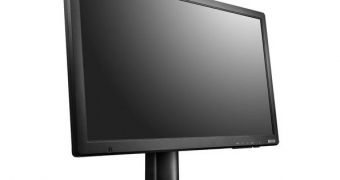After reading about so many price drops or hikes, caused by one factor or another, we at least get to see one IT market segment where companies aren't tossing tags around like a pachinko ball.
The market for liquid crystal display panels is experiencing a sort of tranquil period now, as the world prepares for a new wave of product releases.
Sure, new monitors and TVs, as well as devices with integrated screens -most importantly laptops- get launched all the time.
Nevertheless, sales haven't exactly taken off, nor have they slowed down all that much, and the same goes for prices.
IT players have been acting in tandem as they prepare for a new generation of laptops, notably ultrabooks.
All this boils down to a pretty uneventful March, 2012, especially when examining the ongoing second half.
If one were to go by the sayings of Digitimes, average prices of LCD panels were of $46 for 13.3-inch displays, $42 for 14-inch screens, $41 for 14.5-inch panels and $60 for 17.3-inch models.
Yes, as odd as it may seem, the 14-inch and 15.6-inch actually cost less than 13.3-inch ones.
According to exchange rates, the above sums are equal to 34.75 Euro, 31.72 Euro, 30.97 Euro and 45.32 Euro, respectively.
Notebook vendors contributed to this state of affairs particularly much, with their caution in regards to placing more orders.
Tablet PCs have also been taking up much of the resources of Samsung Electronics and LG Display, which allocated more production capabilities to slates.
All in all, LCD panel prices have remained stable, although it will turn out to have been just a temporary situation.
After all, once Windows 8 comes forward, there will be a renewed interest in mobile PCs. Even before that, a new batch of ultrabooks will come into play. We'll report more as time passes, but you might want to get a new monitor now instead of later.

 14 DAY TRIAL //
14 DAY TRIAL //